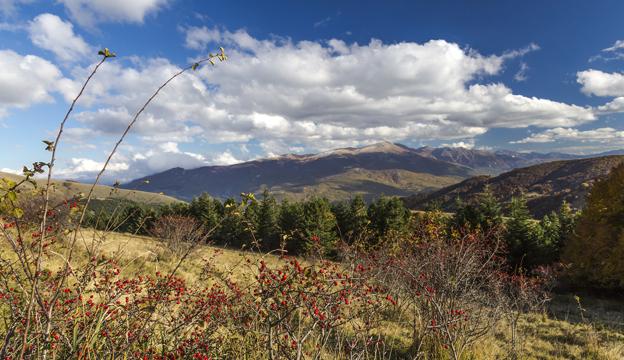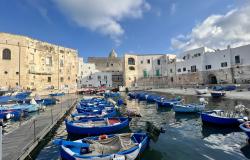One of the largest protected areas in Europe, the Gran Sasso and Monti della Laga National Park covers an area of 2,014 square kilometers (778 sq mi) spread out across the provinces of Teramo, L'Aquila, and Pescara in Abruzzo, approximately 132km from Rome.
Centered around the massif of the Gran Sasso whose highest peak is the Corno Grande, at 2,912 metres (9,554 feet) the highest peak in the Apennines, the park was established in 1991 and is a paradise for nature lovers and those who like an active vacation, while being easily reachable from Rome.
Just beneath the Corno Grande is the Calderone, Europe’s southernmost glacier. The Gran Sasso rises over the large pastures of Campo Imperatore. Snow and wind are common around here.
To the north is the Monti della Laga chain, where thousands of migratory birds can be seen on the shores of Lake Campotosto, a favorite destination for birdwatching.
Covered by woods of beeches, firs, turkey oaks and chestnuts, the park contains one of the most biologically diverse areas of Europe, with 300 kilometers of trails that can be explored on foot, on horseback or by mountain bike.
The park contains more than 2,000 plant species, some found exclusively in this area, such as the Abruzzo Edelweiss. Many species of wildlife live in the park, including the Abruzzo chamois, the Marsican bear, wolves, roe deer, wildcats, wild boars, foxes and squirrels. Among the birds, the golden eagle, the white-backed woodpecker, the goshawk, the common buzzard and the peregrine falcon are some of the most notable. There are also a wide variety of insects, such as the apollo butterfly.
Flocks of sheep guarded by Maremmano-Abruzzese sheepdogs, herds of cattle and semi-wild horses graze the lower slopes of the Gran Sasso from spring to fall. The pastures are covered with field grasses and meadowland wildflowers. The shepherd lifestyle has always been a part of this area, as shown by the numerous dry stone walls, shelters, farms, and rock churches.
Human presence throughout the park is evident, but well integrated within the territory, as can be seen in a number of medieval villages that still retain their original appearance.









